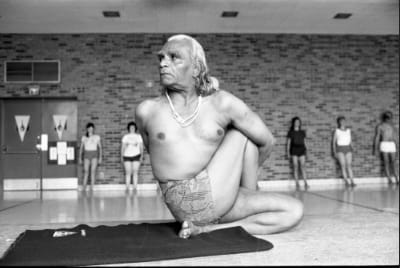Many of us have experienced pain in our yoga classes. The pain could have been there before the class, or it could be something that arose during the practice. But isn’t yoga supposed to help you to relax and destress? Why is pain and discomfort felt, sometimes so acutely in class? Should you be experiencing pain while practising yoga?
In his book Light on Life, Mr B.K.S. Iyengar writes extensively about pain, what it reveals to us and how it can be used to teach us about yoga and indeed, about life. Below are excerpts from the book.
~

Many people focus on the past or the future to avoid experiencing the present, often because the present is painful or difficult to endure.
As we experience pleasures happily, we must also learn not to lose our happiness when pain comes. Learn to find comfort even in discomfort. We must not try to run from the pain but to move through and beyond it.
There are only two ways to confront pain: to live with the pain forever or to work with the pain and see if you can eradicate it.
Since pain is inevitable, asana is a laboratory in which we discover how to tolerate the pain that cannot be avoided and how to transform the pain that can. While we do not actively seek pain, we do not run from the inevitable pain that is part of all growth and change. The asanas help us to develop greater tolerance in body and mind so that we can bear the stress and strain more easily.
Endurance is needed to remain in an asana. To master an asana, you need patience and discipline.
Pain comes only when the body does not understand how to do the asana, which is the case in the beginning. In the correct posture, pain does not come.
Pain is a great philosopher, because it thinks constantly of how to get rid of itself and demands discipline. The other side of the equation of pain is the understanding of how pain brings focus of attention on the affected area. If we release the tension of the brain, that attention shows the way to lessen and later eradicate the source of pain.
The goal is to do the asana with as much possible intensity of intelligence and love. To do this, one must learn the difference between “right” pain and “wrong” pain. Right pain is not only constructive but also exhilarating and involves challenge. Wrong pain is destructive and causes excruciating suffering.
Right pain is usually felt as a gradual lengthening and strengthening feeling and must be differentiated from wrong pain, which is often a sharp and sudden cautionary feeling that our body uses to tell us we have gone too far beyond our present abilities.
Asana practice is an opportunity to look at obstacles in practice and life and discover how we can cope with them.
Excerpted from Light on Life: The Yoga Journey to Wholeness, Inner Peace, and Ultimate Freedom by B.K.S. Iyengar.
Book Light on Life

Share this post